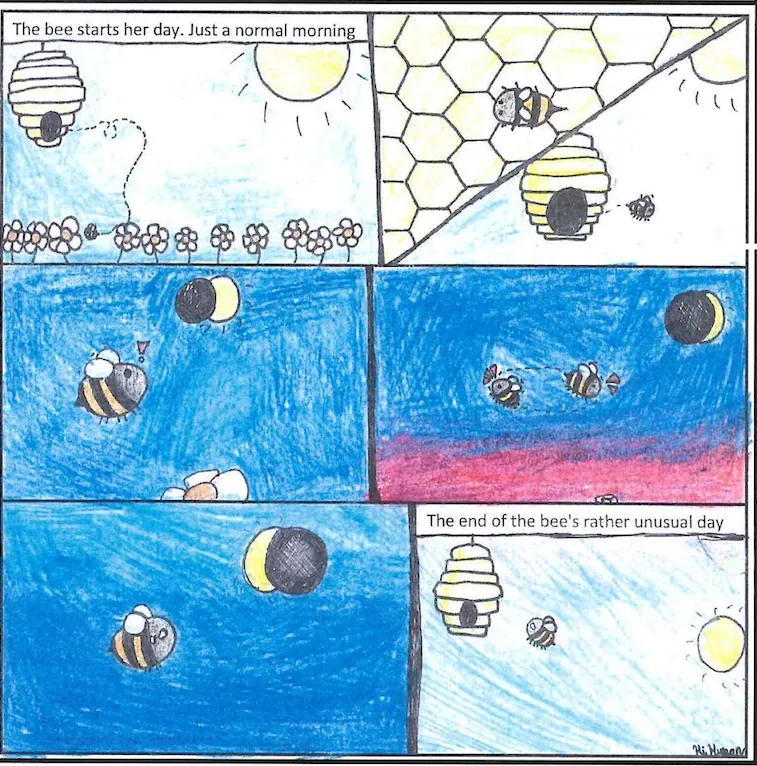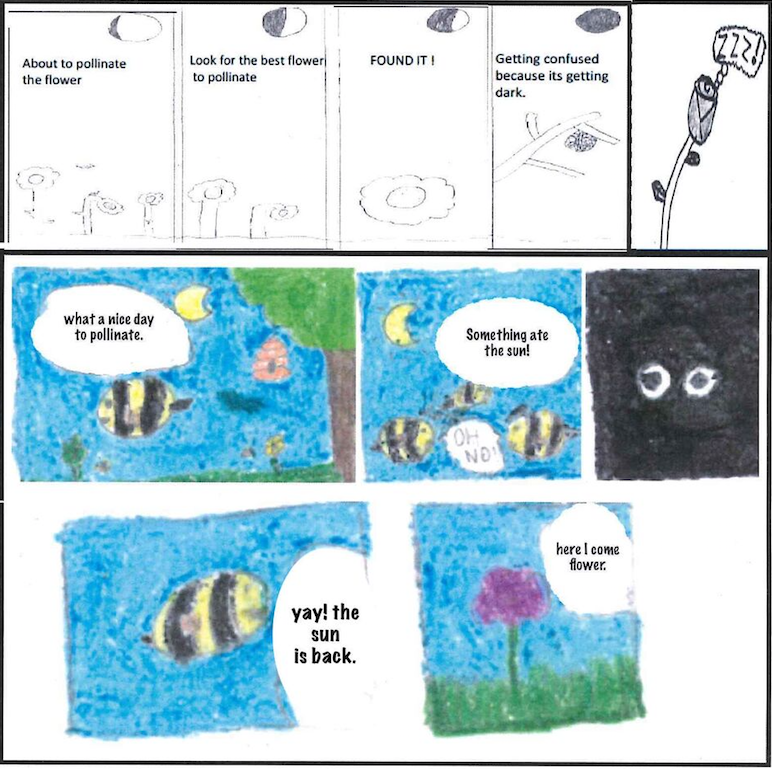Busy Bees Take a Break During Total Solar Eclipses
The 2017 North American eclipse gave researchers an inside look at how bees respond to light—with the help of a few hundred elementary-schoolers
/https://tf-cmsv2-smithsonianmag-media.s3.amazonaws.com/filer/20/a0/20a06c42-a8ff-4bea-815a-3912dbc59de3/182411.jpg)
On August 21, 2017, people across North America from the Pacific coast to the Atlantic seaboard paused their normal routines to experience a total solar eclipse.
And so did the bees.
A bee’s day starts when the sun rises. As long as there’s sunlight, bumblebees and honey bees will stay busy from dawn to dusk. But how do the insects respond during that rare occurrence when the moon passes directly in front of the sun, casting the daytime world into shadow? Last year, ecologist Candace Galen of the University of Missouri, a team of researchers and a few hundred elementary school students set out to find the answer.
Using tiny microphones suspended among flowers, the team recorded the buzzing of the bees through all stages of the eclipse. The bees were active and noisy right up to the last moments before totality, the part of a total solar eclipse when the moon blocks all direct sunlight, and a night-like darkness settles over the land. As totality hit, the bees went totally silent in unison.
“It was like someone turned out the lights and bees stopped flying,” says Galen, lead author of the new study published by the Entomological Society of America. “It was abrupt, it wasn’t gradual. It was like falling off a cliff, that abrupt.”
For a bee to call it quits in the middle of the day is pretty unusual, unless something like a storm passes through. As Galen puts it, “bumblebees and honeybees have to make hay while the sun shines.” The insects might actually react similarly to totality as they do to dark storm clouds rolling in.
“These populations are not adapted to eclipses,” says evolutionary ecologist Nicole Miller-Struttmann at Webster University in St. Louis. “Some kind of strong evolutionary history isn’t telling them what to do during an eclipse. That implies there is some other signal they are adapted to and using.”

The clear drop from buzzing to silence was the most striking change during the eclipse, but additional, smaller changes in the bees’ buzzing could give the researchers clues about how the insects responded. As Galen notes, the bees’ buzzes lasted longer as it gradually got darker approaching totality. Increased buzz length suggests the bees started flying more slowly, they were taking longer flights, or some combination of both.
“The way I think about it is, if you’re driving on a road and it gets foggy, you slow down,” explains Galen. When there is less visibility, slowing down helps you process information and maintain situational awareness—and like the bees did during totality, if there’s absolutely zero visibility, you should probably pull over. Adjusting speed to acclimate one’s senses to an environment that suddenly shifts is a common behavior in many animals, and it’s been observed in bees when they fly before sunrise or sunset.
Many animals respond in unique ways to a total solar eclipse, but there’s a huge lack of research studying these behaviors, Galen says. As excitement about the 2017 eclipse grew, people started asking her what animals might be doing when the darkness hit. She didn’t know, and there wasn’t much to go off of. The umbra, or darkest part of the moon’s shadow, only covers a given area for a few minutes, and total solar eclipses occur randomly all over the planet—mostly over water.
“Eclipse science is so rare. It’s all idiosyncratic,” says Miller-Struttman. “They were able to do this experiment at multiple locations This is the best data that are out there in terms of how bees react to the eclipse.”
The Great American Eclipse of 2017 was perfect for the study as it was land-bound for more than 16 hours as it crossed the country. The team had two student groups in Oregon, one in Idaho, and several in rural and urban locations in Missouri record buzzing bees and send in USB drives—or as Galen says, “USBees”—with audio files for the researchers at the University of Missouri. (The school kids got to analyze the data as well, and impressively, were able to match the researcher’s findings with 91 percent accuracy.)
There’s another cross-continental eclipse in 2024, and Galen plans to set up mics inside hives next time as well as amongst flowers to test anecdotal evidence from the 1930s that suggests bees return to their hives during totality.
“The next total solar eclipse will come through Missouri in 2024,” says the conclusion of the new study. “We bee chasers, including some promising new recruits, will be ready.”
/https://tf-cmsv2-smithsonianmag-media.s3.amazonaws.com/accounts/headshot/rachael.png)


/https://tf-cmsv2-smithsonianmag-media.s3.amazonaws.com/accounts/headshot/rachael.png)